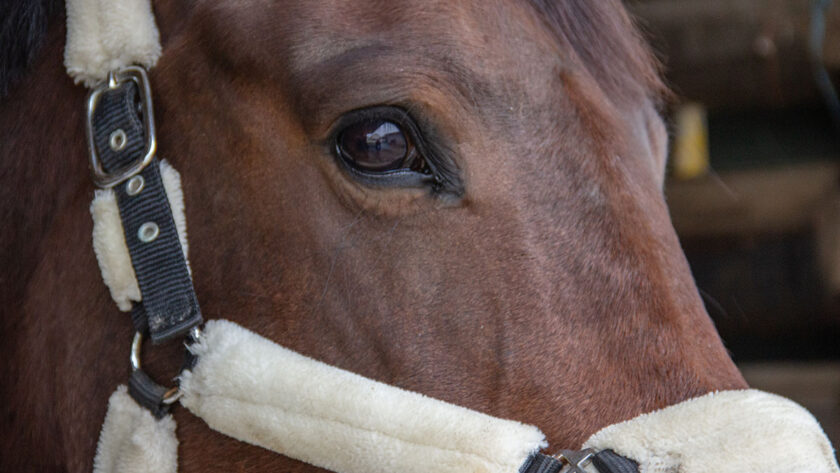Leading and using a horse halter and head collar may seem simple, but it is necessary to understand the best practices to ensure the safety of both the horse and the handler.
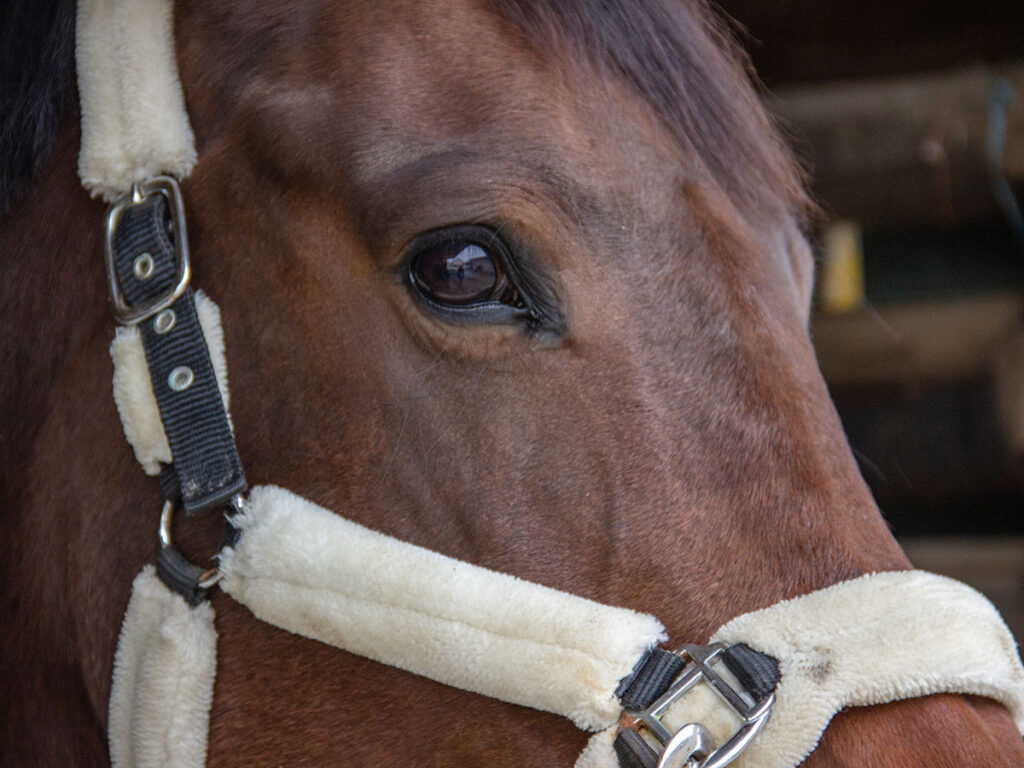
We aim to address some of the most common questions and points related to the topic, including:
- Why is it not advisable to leave a halter on a horse?
- Can you leave a leather halter on a horse?
- Is it safe to leave a horse tied up all night?
- How to properly position the halter and bridle?
- What benefits of using a padded halter?
and more.
By understanding these best practices, you can create a safer and more positive experience for you and your equine companion.
Why You Shouldn’t Leave a Halter on a Horse:
Leaving a halter on a horse for an extended period can be extremely dangerous.
Halters are designed to fit snugly around the horse’s head to provide control and allow for leading, but they can also cause serious injury if left on for too long.
Over time, the halter can rub against the horse’s skin and cause painful sores or even cuts. Additionally, if the halter gets caught on something, the horse may panic and injure itself while trying to escape.
It is wise to remove the halter after use to prevent these potential dangers. When not in use, store the halter in a safe and secure location away from the horse’s reach. Regularly inspect the halter for any signs of wear or damage and replace it as needed.
By taking these precautions, you can help ensure the safety and well-being of your horse.
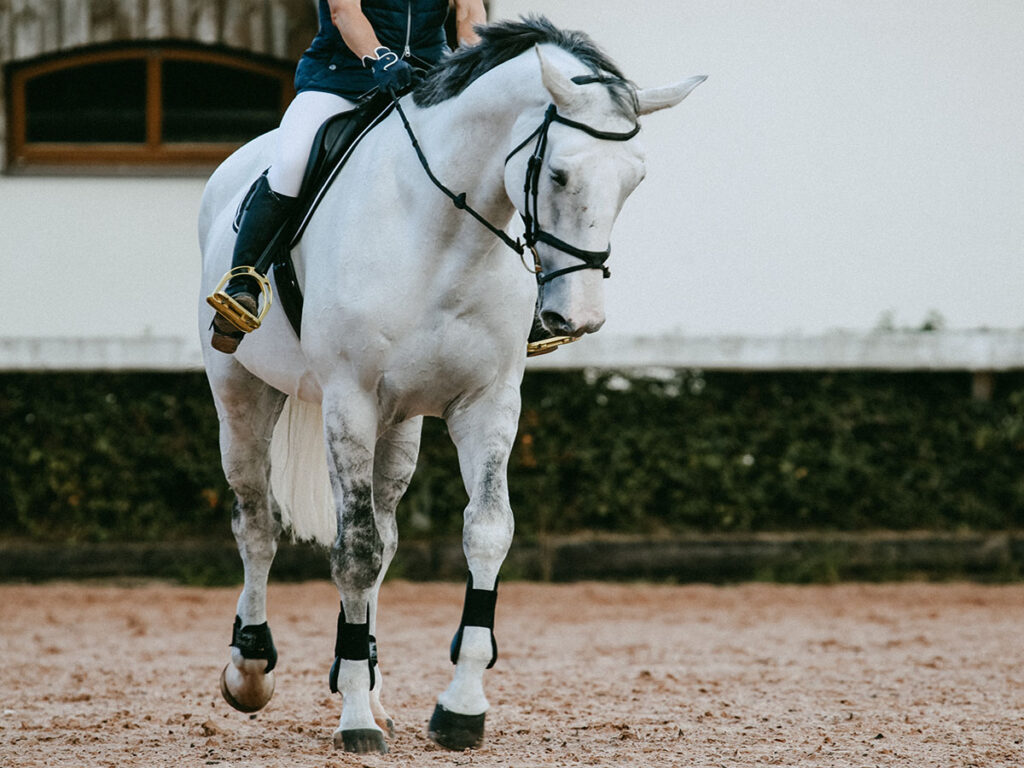
Can You Leave a Leather Halter on a Horse?
There are various types of halters available, including nylon, rope, and leather halters. Each type of halter has its advantages and disadvantages and is suitable for different situations.
When it comes to leaving a halter on a horse, a leather halter can be a good option. Leather halters are typically softer and more comfortable for the horse than nylon or rope halters. However, it is still always advisable to remove the halter after use to prevent potential injury or discomfort.
In some circumstances, leaving a leather halter on a horse for a short time may be acceptable. For example, if the horse is in a controlled environment such as a stall or paddock, and is being monitored closely, it may be safe to leave the halter on for a short period.
However, it is important to never leave the halter on overnight or for an extended period and to always check the horse closely to ensure its safety.
Can You Leave a Horse Tied Up All Night?
Leaving a horse tied up for an extended period, especially overnight, can be dangerous and potentially harmful to the horse.
Horses are prey animals and need to be able to move freely to feel safe and comfortable. When tied up for a long time, a horse can become stressed and anxious, which can lead to injuries or other health problems.
Additionally, if the horse is tied in a location where it cannot move around freely or is at risk of getting caught on something, it can result in injury or even death.
If it is necessary to tie up a horse for a short time, it is important to ensure that the horse is comfortable and safe. The horse should be able to move around, stretch its legs, and have access to water and food. It is also best to use a safe and secure tying method, such as a quick-release knot, and to regularly check on the horse to ensure it is not in distress.
In general, it is best to avoid leaving a horse tied up for an extended period, especially overnight. Instead, consider alternative options such as a stall or paddock where the horse can move freely and feel safe and comfortable.
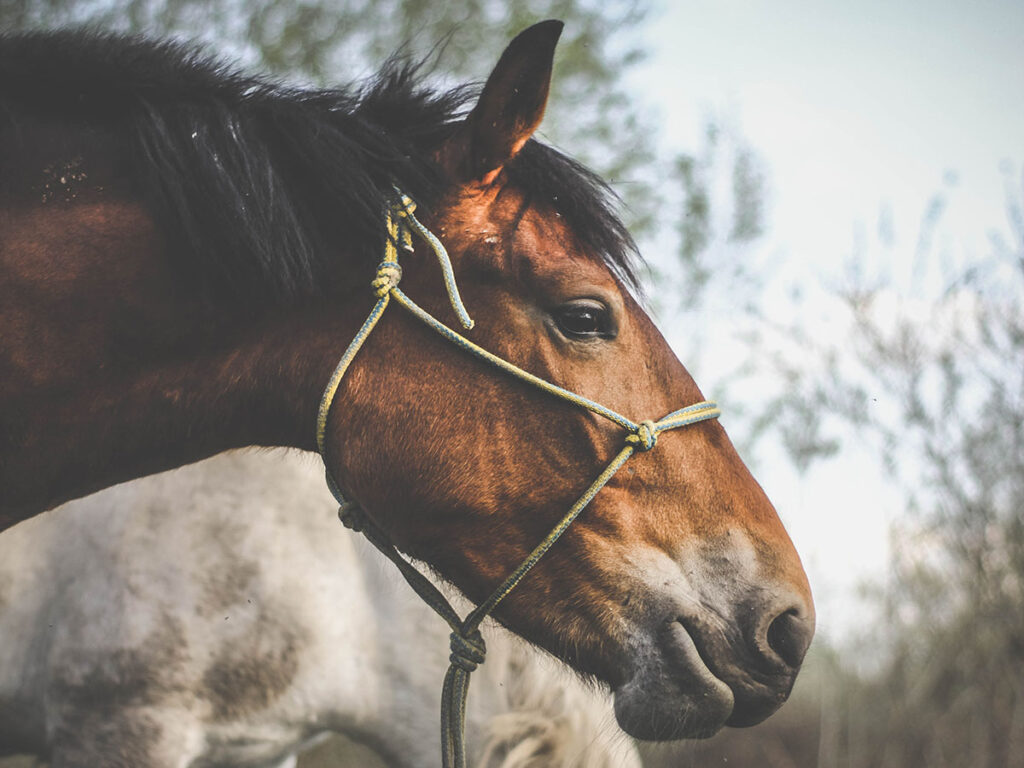
Does Halter Go Over or Under Bridle?
When leading a horse, it is good to understand how to properly position the halter and bridle on the horse’s head. The halter should be placed under the bridle, with the halter’s noseband over the bridle’s noseband.
Positioning the halter under the bridle helps to ensure that the horse is properly controlled and can be easily led. The halter provides an extra level of control and can be used to guide the horse’s head if needed.
Furthermore, positioning the halter under the bridle can help to prevent the horse from accidentally pulling the bridle off.
It is essential to ensure that both the halter and bridle are properly fitted and adjusted to the horse’s head. The halter should be snug but not too tight, with enough space to fit two fingers between the halter and the horse’s head.
The bridle should also be snug but not too tight, with the bit properly positioned in the horse’s mouth.
When leading a horse it is safer to position the halter under the bridle, ensuring that both the halter and bridle are properly fitted and adjusted for the horse’s comfort and safety.
Why Use a Padded Halter?
Using a padded halter can provide several benefits for a horse, particularly in terms of comfort and preventing rubbing and irritation.
A padded halter is designed with extra cushioning around the noseband and crownpiece, which helps to distribute pressure evenly and prevent discomfort or pain for the horse.
When a horse is wearing a halter, there is a risk of rubbing and irritation in areas where the halter makes contact with the skin, particularly around the nose and head. This can be uncomfortable for the horse and may cause sores or other injuries. A padded halter can help to prevent this by providing a soft, cushioned layer between the horse’s skin and the halter.
A padded halter can also provide extra support and comfort for the horse’s head and neck. This can be especially beneficial for sensitive or easily stressed horses, as it can help to create a more relaxed and comfortable environment for them.
A padded halter can help promote the horse’s comfort and well-being while reducing the risk of rubbing and irritation. Choosing a padded halter that fits properly and is made from high-quality materials ensures the best possible results.
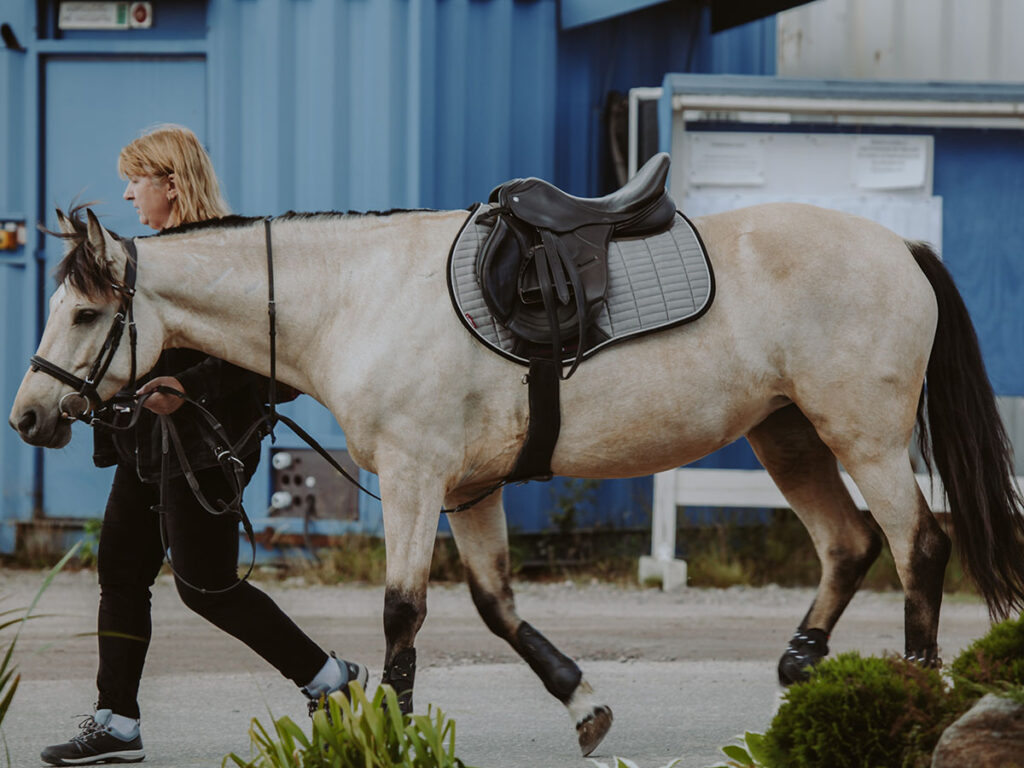
Why Do You Lead a Horse from the Left?
Leading a horse from the left side is a tradition that has been passed down through generations of horse handlers. While the reasons for this tradition may vary, there are both historical and practical reasons for leading a horse from the left.
Historically, leading a horse from the left can be traced back to the days of cavalry warfare. When riding into battle, soldiers would mount their horses from the left side, as this allowed them to hold their weapons with their right hand and mount the horse with their left. By leading the horse from the left, the soldier was able to maintain control of the horse while also keeping their weapon at the ready.
Practically speaking, leading a horse from the left is also beneficial for several reasons.
When leading a horse, the handler is often carrying a lead rope in their right hand, which makes it easier to control the horse from the left side.
Plus, many horses have been trained to be led from the left, which can make it easier for them to understand commands and respond to the handler’s cues.
While there may be some exceptions to this tradition, such as when leading a horse while riding or when handling a horse with a specific injury or condition, leading a horse from the left is generally considered the best practice for horse handlers.
How Do You Lead an Unwilling Horse?
Leading a horse that is unwilling or resistant can be a challenge for even the most experienced handler. However, some techniques can be used to help gain the horse’s trust and cooperation.
One of the most effective ways to lead an unwilling horse is through positive reinforcement. This involves rewarding the horse for good behaviour, such as following cues or walking calmly on a lead rope. Rewards can include treats, verbal praise, or even a break from work.
By associating good behaviour with positive outcomes, the horse will be more likely to repeat these behaviours in the future.
Another aspect of leading an unwilling horse is building trust. This can be achieved through consistent handling and establishing a routine. Horses thrive on routine and predictability, so establishing a consistent routine can help the horse feel more comfortable and secure.
It is imperative to approach an unwilling horse with patience and understanding. Horses are sensitive animals and often pick up on the handler’s emotions. Remaining calm and patient can help the horse feel more at ease and willing to cooperate.
If the horse is particularly resistant, it may be helpful to enlist the help of a professional trainer or behaviourist. These individuals can provide additional guidance and support in working with the horse.
Leading an unwilling horse requires patience, understanding, and consistent handling. By using positive reinforcement, building trust, and approaching the horse with a calm and patient demeanour, handlers can help to gain the horse’s trust and cooperation.
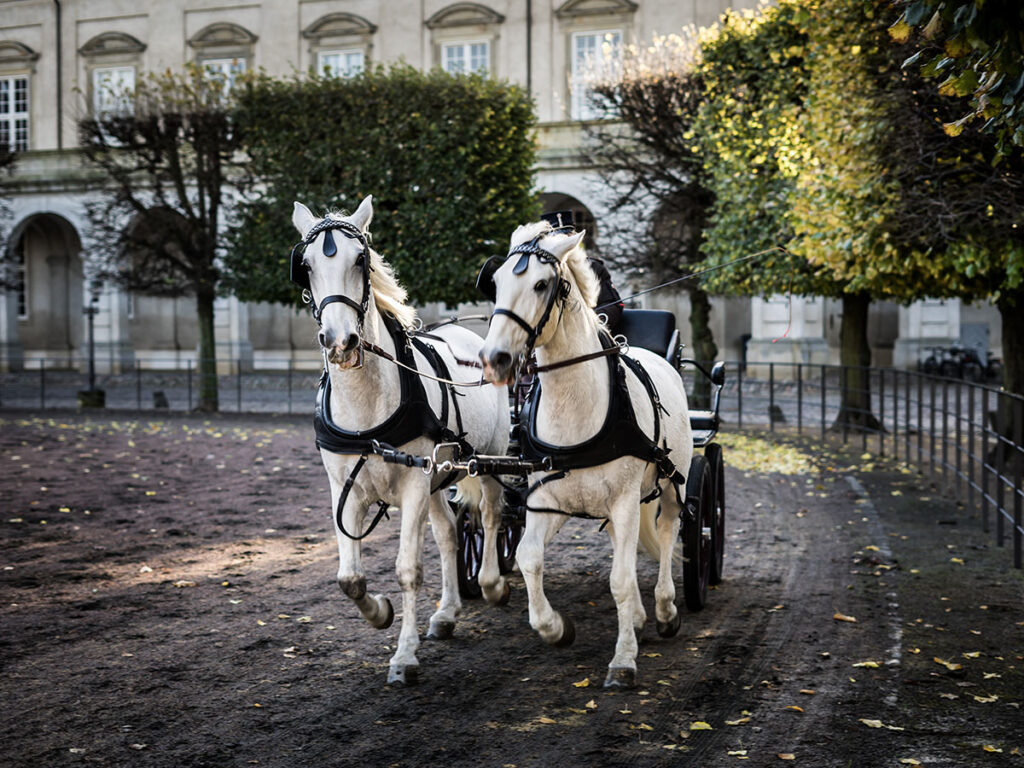
What Not to Do When Leading a Horse
Leading a horse may seem like a simple task, but it is best to avoid common mistakes that can cause harm to the horse and negatively affect the handler-horse relationship.
One of the most common mistakes is pulling or jerking on the lead rope. Pulling can cause discomfort and pain for the horse and a breakdown in trust between the horse and the handler. It is crucial to lead the horse with a soft, steady pressure on the lead rope, rather than sudden or forceful movements.
Another mistake to avoid is walking too close to the horse’s hindquarters. Walking behind a horse can be dangerous, as the horse may kick out in self-defence or out of fear. Maintain a safe distance from the horse’s hindquarters and keep a watchful eye on the horse’s body language to anticipate any potential signs of discomfort or fear.
It is also beneficial to avoid sudden movements or loud noises that can startle the horse. Horses are sensitive animals and can be easily frightened the aim is to keep their trust and cooperation. By remaining calm and consistent in handling, the horse will be more likely to feel at ease and willing to cooperate.
It is advisable to lead the horse with a soft, steady pressure on the lead rope, maintain a safe distance from the horse’s hindquarters, and avoid sudden movements or loud noises that can startle the horse.
By avoiding these common mistakes, handlers can help ensure the safety and well-being of their horse, while building a positive relationship based on trust and cooperation.
Does It Matter Which Side You Lead a Horse?
When it comes to leading a horse, tradition has dictated that it should be done from the horse’s left side. This is because horses were commonly ridden with a sword on the left side, making it easier to mount and dismount from that side.
However, there are potential benefits to leading a horse from the right side as well. Leading from the right can help balance the horse’s muscle development, and provide an opportunity to work on the horse’s training on both sides.
Regardless of which side is chosen, it’s important to lead the horse safely and confidently, using proper techniques and equipment.

What to Do When a Horse Tries to Walk in Front of You When Leading
When leading a horse, it’s wise to establish clear boundaries and reinforce proper behaviour.
Including, maintaining proper positioning and control, with the horse walking at your shoulder or slightly behind you.
If a horse tries to walk in front of you when leading gently but firmly correct the behaviour. Stop the horse and gently move them back to the proper position, using verbal cues and light pressure on the lead rope if necessary.
Consistency is key when reinforcing proper behaviour. If the horse continues to try to walk in front of you, repeat the correction as many times as necessary, always being calm and firm.
It’s also important to consider the horse’s behaviour and the situation in which you are leading him. If the horse is particularly nervous or distracted, it may be helpful to work on establishing trust and focus through groundwork exercises before attempting to lead.
Maintaining proper positioning and reinforcing proper behaviour can help establish a safe and effective handler-horse relationship when leading.

In conclusion, it is crucial to follow best practices when leading and using a horse halter and head collar to ensure the safety of both the horse and the handler.
We have covered a variety of topics in this article, including why you should not leave a halter on a horse for an extended period, the proper way to position a halter and bridle on a horse’s head, and techniques for leading an unwilling horse.
We have also discussed common mistakes to avoid when leading a horse, as well as the potential benefits and drawbacks of leading a horse from different sides. With best practices and techniques handlers can establish a positive and safe relationship with their horses.
If you have any experiences or tips to share on this topic, please feel free to leave them in the co

